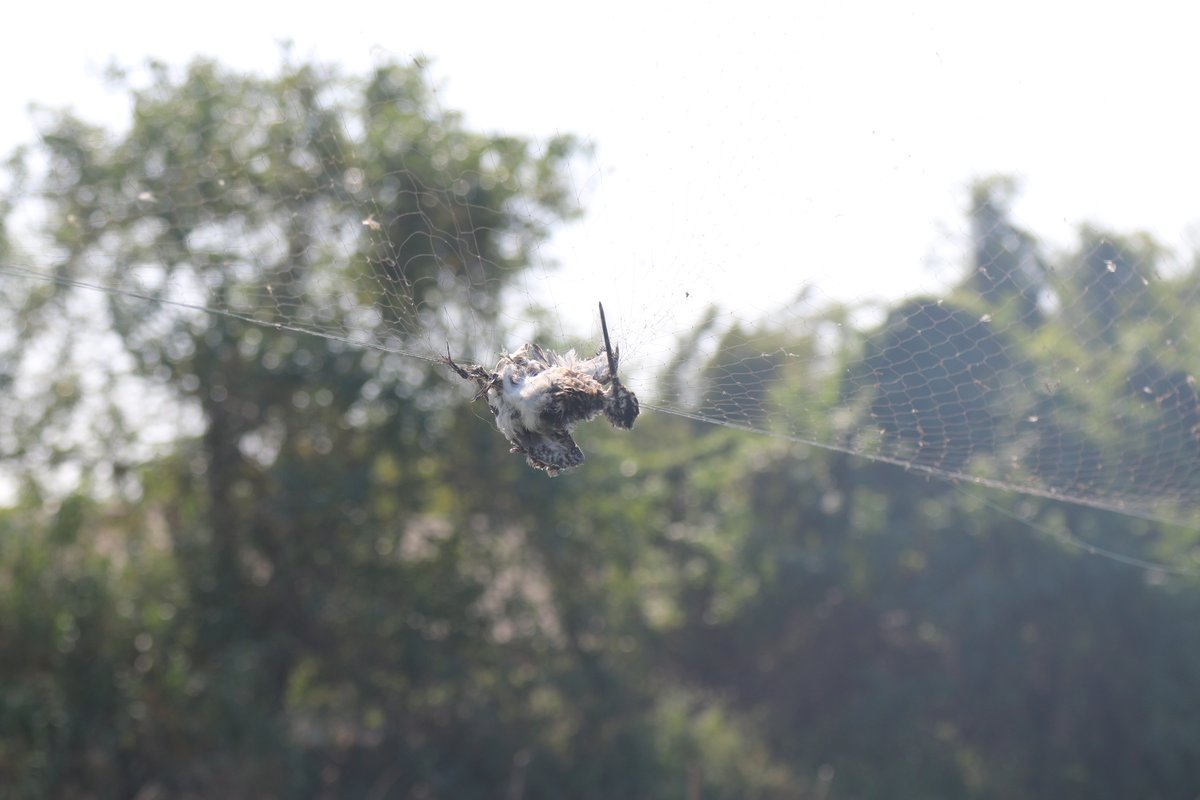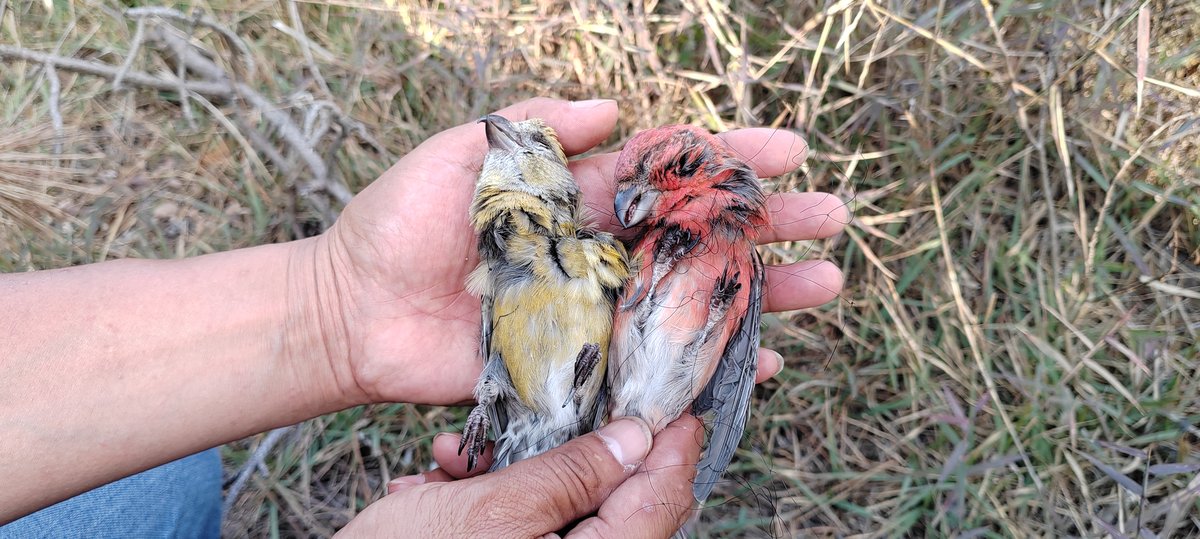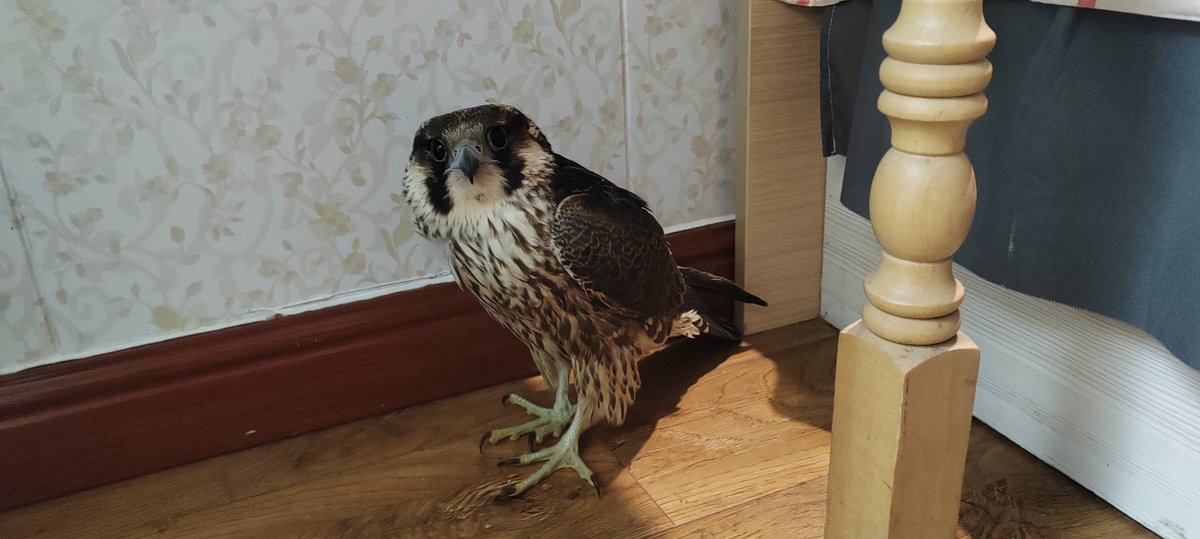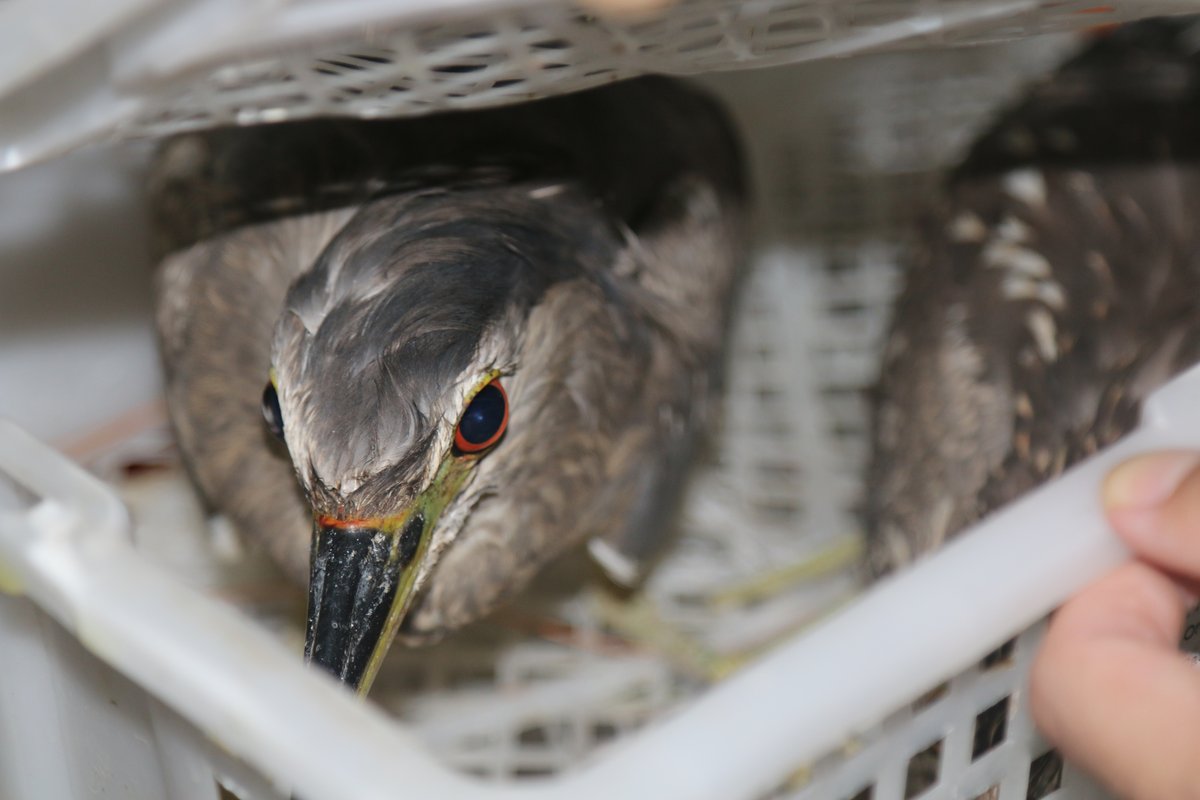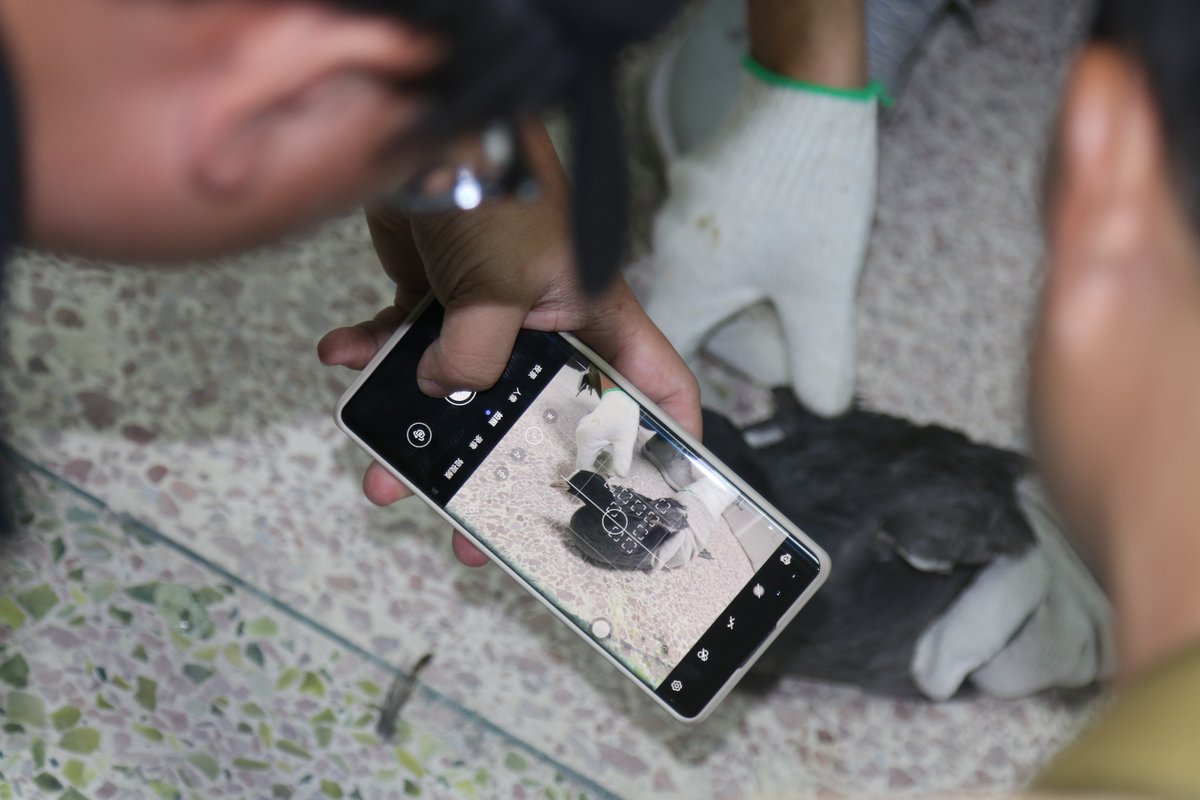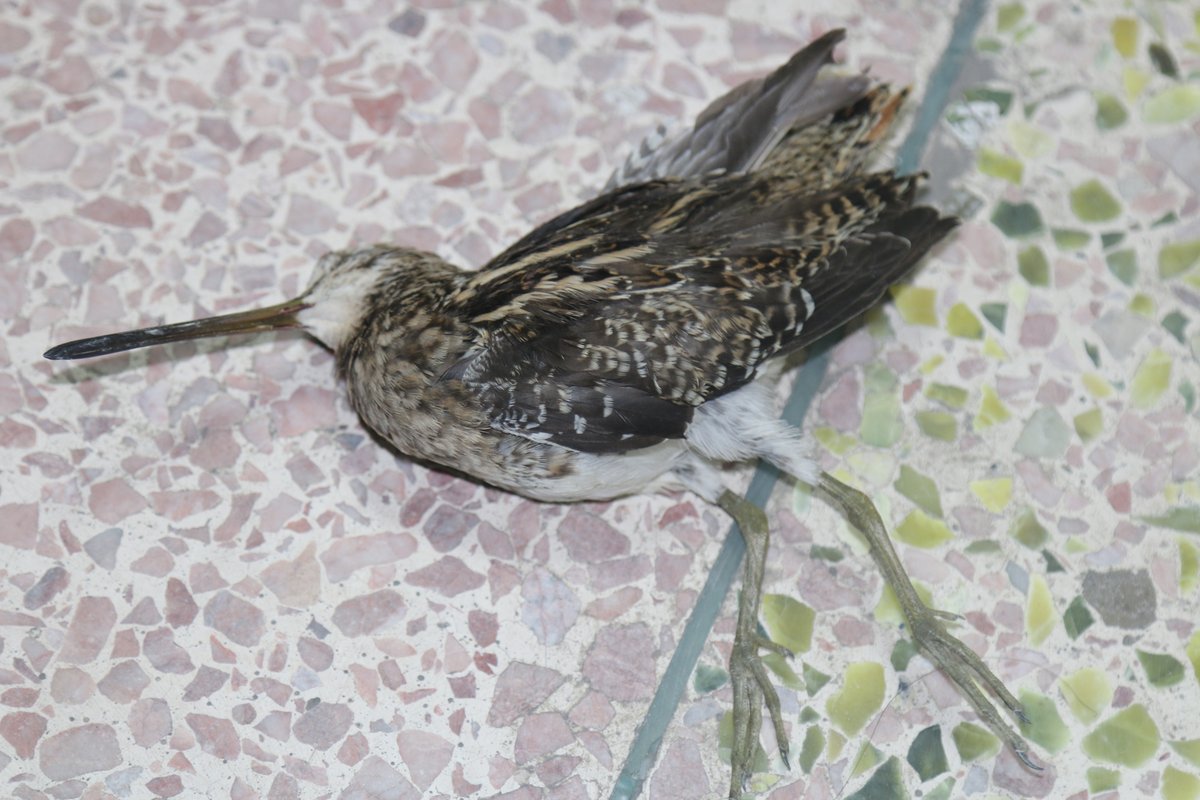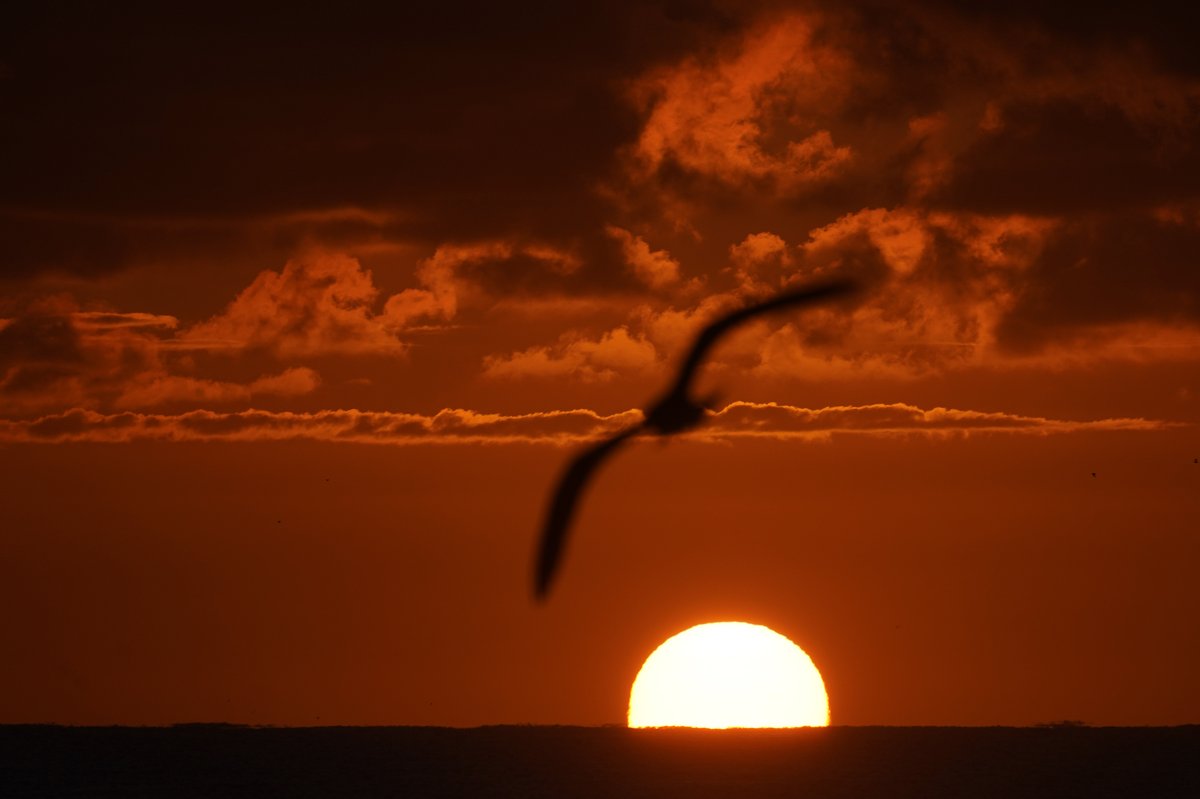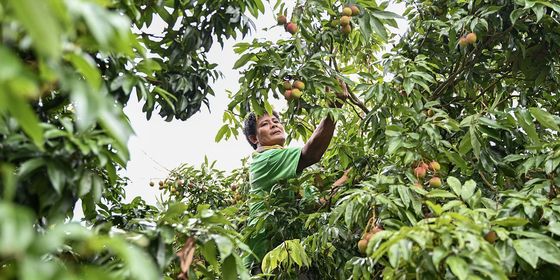”Why go to so much trouble for a bird?”
The sparrowhawk was dead: decapitated on its annual migration route from north to south.
Yue Hua’s heart felt heavy, but this wasn’t the first such tragedy this conservationist had seen over the last 10 days.
Birds migrate for survival, and along the way, human poachers mount deadly nets on bamboo poles for profit. The birds they catch mostly end up sold as caged pets or food. It’s a lucrative trade: a forest police officer estimated that poachers can make “close to 30,000 yuan for a night of hunting.”
Between 2014 and 2020, research led by Liang Dan at Sun Yat-sen University found that birds account for 65 percent of the prey in 9,256 legal cases related to wildlife poaching—and 50 percent of these birds belonged to endangered species. According to Yue and other conservationists, the introduction of new legal amendments and crackdowns have curbed poaching activities over the years, but over the last 12 months, poachers seemed as active as ever.
They want to catch more poachers, but their mission has not run smoothly. In 2022, a new legal interpretation used the monetary value of the animal as a basis for prosecuting poaching as a criminal activity, but so far there is not a unified standard for prosecuting or punishing these acts. Moreover, the division of responsibility between public security and forestry departments, as well as the process of assessing the animal’s value, frequently deadlocks law enforcement.
It all comes down to a fundamental debate: Just whose interests does the law protect? The wildlife, or the humans that pose a threat to it?
Echoes of a wildlife massacre
On October 13, autumn winds on the island carried the echo of birdsong. But for Yue, this symphony caused unease.
Sure enough, he soon spotted the dead sparrowhawk. The fresh carcass was beheaded, with only its wings and tail intact, and left among the bodies of dozens of birds of prey. Trails of bright red blood indicated the tragedy had taken place only that day.
Yue eventually found a large net fixed to a nearby tree stump, where several migratory birds were still struggling to free themselves. The nets had mesh holes about four fingers wide, but poachers used different sizes depending on the prey they were after. They were made of mesh wires so fine that they were only clearly visible under sunlight.
“Poachers’ nets are usually made with wire, and with one thicker wire in every other section,” Yue explains. “This is so when the bird strikes the net, the net will sink and create a pocket around them. The desperate bird will then grab at the mesh with their claws or beak, but this will only cause the net to wrap itself tighter around the bird’s neck, eventually leading to suffocation. In the summer, with the scorching heat, it’s not unusual for birds to get dehydrated and die in the process.”
Some birds, Yue added, are more highly sought after than others in the market. Owls and sparrowhawks aren’t in high demand, so poachers often chop off their heads and pass them off as more precious birds of prey. Intact sparrowhawk carcasses may also be tied to bird nets as bait for falcons and other predators.
Bird poaching used to be widespread in China, Yue recalls. The study led by Liang Dan showed that poaching was a prevalent issue in 319 municipal-level cities. At a staggering total of over 2.05 million captures over six years and three months, birds remain the main target for poachers—and this figure only accounts for prosecuted cases. Yue acknowledged “a gradual, slow improvement” after the anti-poaching campaigns of 2012, but during the migratory season last September, bird conservationists still reported plenty of poaching activities. These reports came from Shandong, Anhui, Hunan, Guangdong, and other provinces, which are home to national nature reserves part of the so-called “Millennium Bird Trail,” a migratory route from Siberia to Australia that passes through China.
Yue laments the reality that monetary gain is an undeniable factor fueling poachers’ criminal activity. The Central Plains and northern China have a long history of falconry, domesticating goshawks to hunt young birds. The most majestic eagles are also the fiercest hunters. A goshawk weighing roughly over a kilogram will sell for anything from 3,000 to 5,000 yuan. For each additional 50 grams, an increase of 1,000 yuan applies.
Meanwhile, other prey is kept as game or, lastly, caged pets. Wax-billed finches, for instance, are not birds of prey, but enjoy fame on account of their superb singing. Usually, they’re sold for 100 yuan each at the market. However, it is not unusual for the price to reach a few hundred or even a couple of thousand.
Yue even feels that poachers are paying less and less of a price for their offenses. His most recent report to the police, filed on October 26, 2023, led to a meager total of three arrests out of six filed cases. Two of the poachers were released on bail pending trial. Half a dozen live birds were rescued, plus three that had died.
“You know there’s way more happening on those mountains,” Yue says. “They just don’t count as criminal offenses according to current legal standards.” According to Yue, even if the police follow up with arrests, they will often just shelve the case or dole out administrative penalties.
“Conservationists’ reports are not taken seriously,” he says. “There’s no way of enforcing the laws.”
Who benefits from poaching?
“The industry chain of poaching is fairly mature,” says Yue. A decade of investigation from his fellow bird conservationists has shed light on the usual destinations of poached birds: local restaurants, markets, and farms, plus some sent across provincial lines by trucks. These vehicles are well known to activists, as one of them recalls: “Once I saw seven full trucks.”
Zhou Yanfeng is one of these devoted conservationists. As of 7 a.m. on November 24 last year, he had been staking out illegal activity in one county in the Chaoshan region of southern China for two days. Finally, he saw a person entering a fresh vegetable and meat shop with two baskets, looking around nervously. Through the gaps in the basket weave, a little bird’s head peeked through. Zhou was elated: “This time, they can’t possibly get away!”
Zhou alerted the officers, and they showed up 26 minutes later. Nine live birds and one animal potentially of a protected species were found at the scene. The police also found the carcasses of three small birds in a refrigerator.
Among the officers deployed that day was Fu Jun. He could see the evidence in front of his eyes, but he felt far from easy. He pointed to the April 2022 revision of the existing Wildlife Protection Law (WPL). This update brought an end to the former perspective where poachers were typified as “behavioral offenders” and, as a result, there was no threshold set for whether their actions qualify as criminal offenses. Though it was far from perfect, the old interpretation of the law meant that just one rare and endangered animal discovered at the site of the arrest could be prosecuted as a crime.
But the new legal interpretation added “value” as a standard for prosecution: No matter if the species is rare or endangered, the animal or animal product must be worth over 20,000 yuan for the police to bring criminal charges.
“When those standards are met, the public security bureau may formally proceed to prosecute and arrest the offenders and bring them to court,” Fu explains. “But if they aren’t met, then we can only ask the forestry bureau to give out administrative penalties.” Usually, the forestry bureau asks a third party to evaluate the species of the bird and its monetary value to decide whether the case should be prosecuted as a criminal or administrative one, which also affects which department will handle the case.
Formerly, China’s forestry law enforcement and forestry bureaus were merged. Reform instituted in 2019 separated the two and redistributed the duty of handling criminal and administrative cases between them, often in overlapping ways. Bird conservationists have no power to enforce the law. According to the WPL, any individual can report wildlife poaching to public security organs, industrial and commercial bureaus, or wildlife administrative departments. The forestry bureau is the administrative department in charge of terrestrial wildlife, while aquatic wildlife is under the jurisdiction of the fisheries bureau.
Under this framework, Yue often finds himself lost in translation with grassroots-level law enforcement officers who are ignorant of the law and openly dismiss his reports by telling him, “Not our business, go to the relevant department.” Officer Fu confirms these impressions and reveals that his department has just 10 officers available to respond to calls. Without cooperation from the forestry bureau, it’s hard for them to take effective action.
Waiting game
Officer Fu was uneasy. His team had rescued the birds, but the wildlife now under their custody needed ample ventilation and space to roam. An overnight stay indoors could prove deadly to them. “We don’t have any safe space for them, but if anything happens to them, we’ll get blamed,” he grumbled.
The forestry bureau van arrived after noon and started counting the rescued birds: “Three green-winged ducks, two night herons, one black water chicken, one Eurasian coot...” Experts determined that one of the animals was a Grade 2 nationally protected wildlife species, while the rest were also protected species.
Chen Bo, a law enforcement officer under the forestry bureau, sighed with worry. He was all too aware that appraisal often comes with a hefty bill. One of the rescued birds generated a bill worth 800 yuan, while some others cost over 1,000 yuan. Conservationist Zhou was not oblivious to his concern and cited cases in cities where the authorities ended up with a bill of over 100,000 yuan for appraisal fees alone, and couldn’t come up with the money.
“We end up owing debt to these expert organizations,” says Officer Chen. He adds that there were very few local forensic centers with the qualification to appraise wildlife, so the frozen bird carcasses seized in that investigation had to be sent to Beijing for additional DNA testing.
In 2022, an article by Wen Zhe, director of law enforcement of the National Forestry and Grassland Administration Office, noted that grassroots forestry and grassland departments are insufficiently equipped to fulfill their wildlife protection duties. They lack experts among their ranks, so they’re unable to give an authoritative opinion on whether a case should be classified as a crime.
The actual appraisal is even more cumbersome. According to the official website of the State Forestry and Grassland Administration, the new judicial interpretation adopts a “double standard” in calculating the value of wildlife. Grade 1 wildlife is appraised at 10 times the benchmark value, while Grade 2 wildlife is appraised at five times the standard. For other wild animals and products, each region operates their own standards according to market prices, which can fluctuate wildly.
Conviction, sentencing, and crackdowns depend on the subjective opinion of the local authorities. Some of these poachers are highly mobile. They don’t net a large haul all at once but accumulate profits over time. A local forestry bureau in Guangdong province oversaw the dismantling of 500 kilograms worth of poaching nets, but new reports of poaching continue to come in unabated. “Whenever poachers are stopped in one place, they move to the next. They make so much that whatever administrative penalty pales in comparison,” says Yue.
Three hours later, the identification of the live birds that Zhou rescued was complete, but he was frustrated. Whether a case could be filed was yet to be seen.
Chasing the culprit
Yue has also tried staking out the mountains to try and find the birds’ killers.
At 5 in the morning, a pale dawn rose over the high peaks circled by a few dozen birds. Yue spotted some people making their way to the summit with headlamps, most of them villagers in their 60s and 70s; the youngest had to be over 40. Unsuspicious of Yue’s motives, they willingly disclosed that bird hunting was, for them, simply a local tradition that they had engaged in since their youth.
The villagers each occupy a plot on the hilltops, and come Mid-Autumn Festival every year, they’ll typically spend a month poaching. In spring, the hunting season is much shorter because migratory birds pass through quickly.
According to Officer Fu, the older generation is accustomed to these habits: “It’s normal to them. They didn’t grow up in a climate of restrictions and measures.” Another officer points out: “This is how some of these folks make ends meet. They’re willing to take desperate risks because they rely on poaching to supplement their livelihoods.”
In the course of their patrols, officers Fu and Chen found out that many offenders were ordinary farmers and breeders trying to safeguard their properties from wild birds. For instance, the egrets that lurked in the open sea in the morning often pounced on village ponds at night to feast on fish and shrimp. In orchards, migratory birds gnawed holes in the apples and lychee. In the fall harvest season, they descended to the fields to eat insects, and in the process killed the rice seedlings...
Officer Chen acknowledged the farmers’ perspective: “These folks are losing hundreds, thousands of yuan even, all in one fell swoop.” Thus, law enforcement officials are presented with a dilemma. Should wildlife really prevail over citizens’ rights and interests? The WPL states that the local government must provide compensation for property losses incurred by wildlife protection. Additionally, local governments have encouraged wildlife damage compensation schemes from insurance companies. A total of 21 Chinese provinces and regions have introduced compensation or insurance plans to counteract the damage caused by wildlife.
However, Chen points out that many households have too few assets to qualify for compensation schemes. Furthermore, it is difficult to calculate the losses incurred by wildlife protection.
At the end of the day, hunting nets are the most cost-effective solution for the locals. With this in mind, Yue and his fellow bird conservationists have tried to promote all sorts of alternative measures, from reflective nets that prevent accidental collisions to sound effects, mothball sachets, and other methods. But bird-repelling nets are more expensive than regular poaching nets, while other deterrents are not always effective.
To make things worse, many locals don’t even know that setting up bird nets is illegal. Some will hang dead birds on the nets to “warn” their winged fellows. Others become acquainted with the economic benefits of bird poaching and join the industrial chain.
Law enforcement needs to tread carefully. Whenever they spot a bird net, officers will usually give a warning for prompt removal. “Otherwise the locals just end up hating our guts,” according to Chen and Fu.
At sunset, a group of people come to the riverside and release the birds rescued by Zhou. He unties the plastic basket and takes out an egret. The bird immediately spreads its wings and disappears into the dusk. Officer Chen sighs with relief.
“Why do we go to so much trouble for a bird?”
Seeking balance
The concept of “balance” is front and center in the changes in judicial interpretations of wildlife protection. In 2014, a college student in Henan province was sentenced to 10 years in prison after taking away two nests containing 16 birds, 14 of which were falcons. In 2020, a man who set up a bird net in his yard to capture a sparrow was charged with poaching. Many judiciary experts pointed out that these were unreasonably harsh sentences.
As a result, in 2020, experts in charge of the two supreme courts in China published the new interpretation that “cases involving one single wild animal of small value shall no longer represent criminal offenses.” Preventive measures taken by farmers to protect their crops from wildlife are charged and punished according to their circumstances. Many farmers welcomed the news with excitement.
Supporters of this latest interpretation believe that it balances leniency with severity, as it also added five new circumstances under which poaching would be severely punished. On the other hand, some wildlife conservationists and scholars believe that the new judicial interpretation is tantamount to condoning small offenses. For instance, a red panda has an estimated value of 40,000 yuan. Before, a poacher who captured five of them would have committed a serious offense. Nowadays, they’d have to poach 50 to get the same punishment.
Wei Kaiwen, associate professor at the Law School of the University of Hong Kong, once mentioned in an interview that judges and prosecutors around the world often fail to understand the impact of wildlife crimes on species and the ecosystems they inhabit—after all, animals can’t report their injuries. Therefore, many cases are handled inappropriately and sentenced with much too leniency.
Conservationists, too, demand “balance.” “Whose interests align with that of wildlife? No one’s,” says Yan Jun, a natural education expert and bird conservationist. He believes that the protection of wildlife is “doomed to be a lonely affair.” Just in case things weren’t challenging enough, there are countless interest and power games at play. Yue himself has been threatened in the past to stop reporting cases and opt instead for “private solutions.” Yan has negotiated back and forth with government departments and construction units to create an appropriate habitat for birds, but the funds are simply insufficient.
The founder of a bird protection association said that costs for the project mainly relied on social sponsorship and government procurement: “For the local government to support any project, it must come with good social impact, a virtuous intent, positive data, and perhaps also a bird-watching festival that can drive economic development.”
The conservationist circle remains minuscule. A conservationist association Yan founded in 2005 has seen its membership decrease from 370 to 260. During this same period, domestic fishing associations have seen their ranks grow to hundreds of thousands of members. “Most people still don’t care about bird protection,” he says. “It’s a long road, but we’re still pushing on.”
However, these minority efforts are far from enough. There is still an acute need for better nature education and more public participation to effectively promote law enforcement and come up with effective solutions.
After leaving the island, Yue is still troubled by the nightmarish situations he witnessed there. In late November, he took a bird-watching trip to Poyang Lake, where he witnessed thousands of migratory birds hovering over the water and soaring into the sky, free to wander among the clouds. For a moment, his heart was at peace.
Written by Feng Rui (冯蕊)
Edited in Chinese by Wang Xiao (王潇)
This article originally appeared in Chinese in Original, a public WeChat account under Jiefang Daily. It has been translated, edited, and reprinted with permission.








